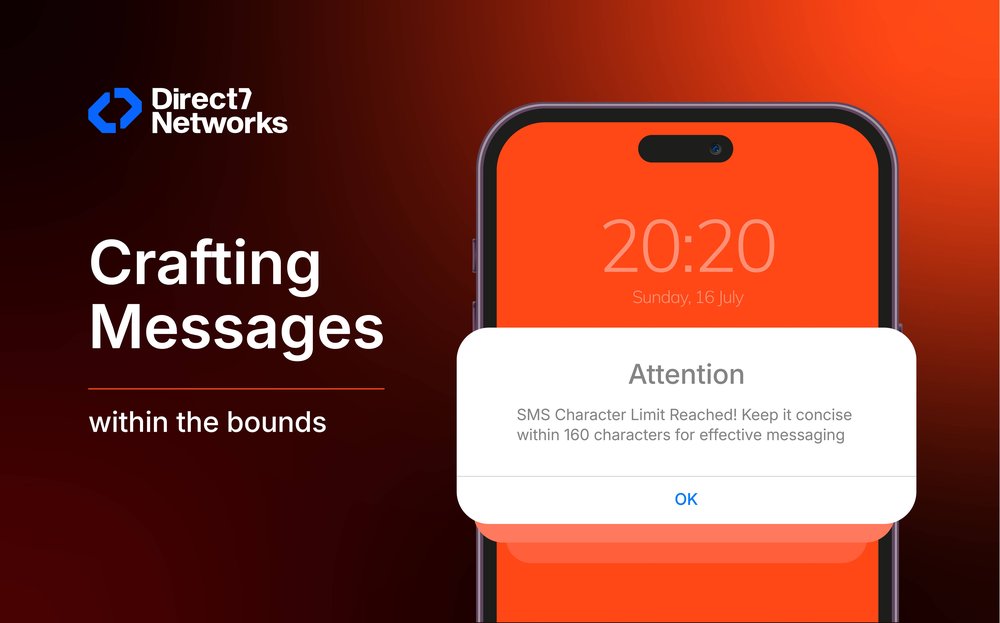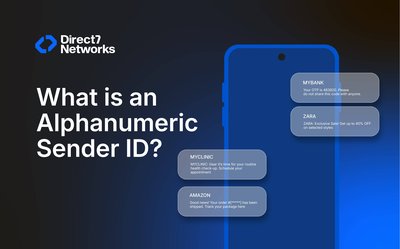
Ensuring SMS within the Character Limit
Learn more about the character limit when sending an SMS.
As mobile users, we tend to check our SMS inbox every day to explore the latest messages waiting for us. SMS is a convenient communication tool that allows us to connect with people regardless of their location and without facing internet barriers.
However, to get the most out of SMS marketing or transactional notifications, businesses must understand one critical factor — the SMS character limit. Knowing how to structure your messages within this limit can help ensure efficiency, reduce costs, and maintain message integrity across all devices and networks.
Why Character Limits Matter in SMS Communication
Unlike email or chat apps, SMS operates within strict technical boundaries. Each message is encoded and transmitted via cellular networks, which limit the amount of data that can be sent in a single packet. Exceeding this limit doesn’t stop your message from being delivered — but it does split it into multiple parts, each billed separately.
For enterprises sending thousands of messages daily, exceeding the character limit can quickly multiply costs and potentially disrupt message readability. Understanding how SMS length is calculated allows you to design shorter, sharper, and more effective communications.
What is the character limit for SMS?
A standard SMS message is limited to 160 characters, including letters, numbers, spaces, and punctuation. If your message exceeds this limit, it becomes a multi-part SMS, which may be split into several messages and charged accordingly.
Multi-Part SMS Explained
When your message crosses 160 characters, it’s broken into segments of 153 characters each (instead of 160). The missing 7 characters are used for invisible headers to link the message parts correctly. Most SMS platforms automatically handle this splitting, but you’ll be charged for each part.
✅ Maximum message length supported: Up to 5000 characters, split into 33 parts.
The character limit for Unicode messages
Sending messages in non-English languages (like Hindi, Arabic, or Chinese)?
If your business communicates with customers in multiple languages — such as Hindi, Arabic, or Chinese — your messages are likely to use Unicode encoding. Unicode supports non-Latin scripts and special characters, ensuring accurate representation of every symbol or letter.
However, Unicode encoding consumes more data per character, reducing your available space.
Here’s the breakdown:
- Single-part Unicode SMS: Up to 70 characters
- Multi-part Unicode SMS: Up to 2,000 characters (split into parts of 67 each)
For example, the simple English word “hello” in Unicode looks like this:
00000068 00000065 0000006c 0000006c 0000006f
This illustrates how each character requires multiple bytes, reducing overall capacity. Therefore, when sending non-English messages, being concise becomes even more important.
The Impact of Multi-Part SMS on Enterprise Messaging
At small volumes, a few extra characters might not seem significant. But at the enterprise level, when you’re sending hundreds of thousands of SMS daily, these small inefficiencies add up.
For example:
- A campaign of 100,000 messages that exceeds the 160-character limit could be billed as 200,000 messages, effectively doubling your cost.
- Multi-part SMS messages are more prone to delivery delays or fragmentation on older devices.
By keeping messages short and clear, enterprises can ensure consistent delivery, minimize expenses, and enhance customer experience.
The best practice to keep SMS character limits
1) Use a tiny URL instead of a long URL.
Maximum uses tiny, short URLs in message content rather than full, complete URLs. A complicated URL will lead to exceeding the character limit, but we can convert the same URL to tiny or shortened, which is the same as the full URL.
2) Put an eye while copy-pasting
It's best not to copy message content directly from a word processor because it may contain hidden Unicode characters that could cause issues. Instead, copy the content from a plain text editor before pasting it into the Hub. This will ensure that any unwanted Unicode characters are removed.
3) Effective use of templated messages
Rather than using the copied message, creating a predefined template with effective short words will help to communicate with customers within the character limit and avoid using junk characters.
4. Optimize Content Through Testing
Before launching a bulk SMS campaign, perform a quick character count test using your SMS platform. Tools like Direct7’s API can automatically highlight messages that exceed the limit, allowing you to refine content before sending.
5. Avoid Unnecessary Punctuation and Formatting
Every character counts. Remove redundant punctuation, excessive exclamation marks, or repeated spaces. Use simple, clear phrasing to convey your message effectively.
Why SMS Optimization Is a Business Advantage
For enterprises, optimizing SMS content isn’t just a technical detail — it’s a strategic advantage. Short, well-crafted messages are:
- Cost-efficient: Staying within the limit means fewer segments and lower costs per campaign.
- Faster to deliver: Shorter messages are processed and transmitted more quickly.
- Easier to read: Concise text improves comprehension and response rates.
- Brand consistent: Predefined templates ensure uniform tone and professionalism.
In competitive markets where customers receive dozens of messages daily, clarity and brevity make your brand stand out.
Direct7 Networks provides a cost-effective SMS API service that helps you easily connect with your customers. By delivering important information and personalized marketing SMS, you can build trust and establish long-term customer loyalty. Additionally, our system ensures excellent performance, delivering time-critical SMS within 15 seconds.
Happy Messaging
Ready to optimize your SMS communication?
👉 Explore our SMS solutions and start sending messages that are concise, powerful, and within the character limit of SMS.





